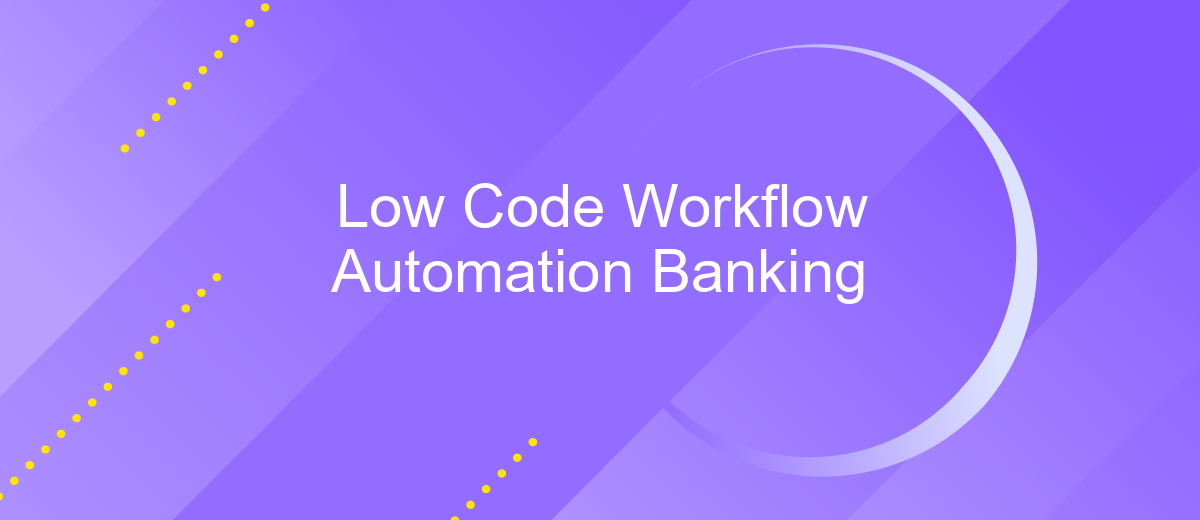Low Code Workflow Automation Banking
In the rapidly evolving financial sector, low code workflow automation is revolutionizing banking operations. By enabling banks to streamline processes with minimal coding, this technology enhances efficiency, reduces costs, and accelerates time-to-market for new services. This article explores the transformative impact of low code solutions on banking workflows, highlighting key benefits and real-world applications that are reshaping the industry.
Introduction: Defining Low-Code Workflow Automation
Low-code workflow automation is revolutionizing the way businesses operate, particularly in the banking sector. By leveraging visual development tools, organizations can streamline processes, enhance efficiency, and reduce the need for extensive coding expertise. This approach empowers non-technical staff to create and modify workflows, accelerating digital transformation and fostering innovation.
- Visual development tools for streamlined processes
- Empowerment of non-technical staff
- Enhanced efficiency and reduced coding requirements
Incorporating services like ApiX-Drive can further enhance the capabilities of low-code platforms by simplifying the integration of various applications and systems. This enables seamless data flow and connectivity, ensuring that all components of the banking workflow are synchronized and functioning optimally. As a result, banks can focus on delivering superior customer experiences and maintaining a competitive edge in the market.
Key Benefits of Low-Code Automation in Banking

Low-code automation in banking offers significant benefits by streamlining processes and reducing the need for extensive manual coding. This approach enables banks to quickly develop and deploy applications, leading to faster time-to-market and enhanced agility. By leveraging visual development tools, banks can automate routine tasks, improve accuracy, and reduce operational costs. Moreover, low-code platforms allow for greater collaboration between IT and business teams, ensuring that solutions are aligned with business goals and regulatory requirements.
Another key benefit is the ease of integration with existing systems and third-party services. Tools like ApiX-Drive facilitate seamless integration, enabling banks to connect various applications and data sources without extensive coding. This not only enhances operational efficiency but also ensures a more cohesive and responsive banking ecosystem. Additionally, low-code automation supports scalability, allowing banks to adapt to changing market demands and customer needs with minimal disruption. Overall, low-code solutions empower banks to innovate and stay competitive in a rapidly evolving financial landscape.
Use Cases: Examples of Low-Code Solutions in the Banking Sector

Low-code solutions are revolutionizing the banking sector by enabling rapid development and deployment of applications with minimal coding effort. These solutions help financial institutions streamline operations, enhance customer experiences, and reduce costs.
- Customer Onboarding: Low-code platforms can automate the customer onboarding process, reducing the time required to verify documents, perform background checks, and approve new accounts.
- Loan Processing: Automating loan approval workflows with low-code tools can significantly cut down processing times, ensuring faster disbursement and better customer satisfaction.
- Fraud Detection: Low-code solutions can integrate with existing systems to quickly develop and deploy fraud detection algorithms, enhancing the bank's ability to identify and mitigate fraudulent activities.
- Regulatory Compliance: These platforms can help banks stay compliant by automating reporting processes and ensuring that all transactions adhere to regulatory standards.
- Integration of Services: Tools like ApiX-Drive facilitate seamless integration between various banking services, allowing for smooth data transfer and process automation without extensive coding.
By leveraging low-code solutions, banks can quickly adapt to market changes, improve operational efficiency, and provide better services to their customers. The flexibility and speed offered by these platforms make them an invaluable asset in the rapidly evolving financial landscape.
Implementation Considerations: Challenges and Best Practices

Implementing low code workflow automation in banking presents unique challenges and opportunities. One of the primary challenges is ensuring data security and compliance with stringent financial regulations. Banks must carefully evaluate the security measures of low code platforms to protect sensitive customer information.
Another challenge is integrating these platforms with existing legacy systems. Many banks operate on outdated infrastructure, which can complicate the integration process. Utilizing services like ApiX-Drive can facilitate seamless integration, allowing different systems to communicate effectively.
- Ensure robust data security and compliance with financial regulations.
- Leverage integration tools like ApiX-Drive for seamless connectivity with legacy systems.
- Invest in training for staff to effectively utilize low code platforms.
- Regularly update and maintain the low code solutions to adapt to evolving banking needs.
By addressing these challenges and following best practices, banks can successfully implement low code workflow automation. This not only enhances operational efficiency but also improves customer experiences, making financial services more accessible and responsive.
Future Trends: Advancing Low-Code Automation in Banking
The future of low-code workflow automation in banking is poised for significant advancements, driven by the increasing demand for efficiency and agility in financial services. One of the key trends is the integration of artificial intelligence (AI) and machine learning (ML) into low-code platforms, enabling banks to automate complex decision-making processes and enhance customer experiences. Additionally, the adoption of cloud-based solutions will continue to grow, offering scalable and secure environments for deploying low-code applications.
Another emerging trend is the focus on seamless integration with third-party services and APIs, which is crucial for creating interconnected banking ecosystems. Tools like ApiX-Drive are becoming essential, as they allow banks to easily connect various applications and automate data workflows without extensive coding. This not only reduces operational costs but also accelerates time-to-market for new financial products and services. As these technologies evolve, low-code automation will become an integral part of the banking industry's digital transformation, driving innovation and improving overall efficiency.
FAQ
What is Low Code Workflow Automation in Banking?
How can Low Code Workflow Automation benefit banks?
What types of banking processes can be automated using Low Code platforms?
Is it secure to use Low Code platforms for banking automation?
How do I integrate Low Code Workflow Automation with existing banking systems?
Apix-Drive will help optimize business processes, save you from a lot of routine tasks and unnecessary costs for automation, attracting additional specialists. Try setting up a free test connection with ApiX-Drive and see for yourself. Now you have to think about where to invest the freed time and money!

